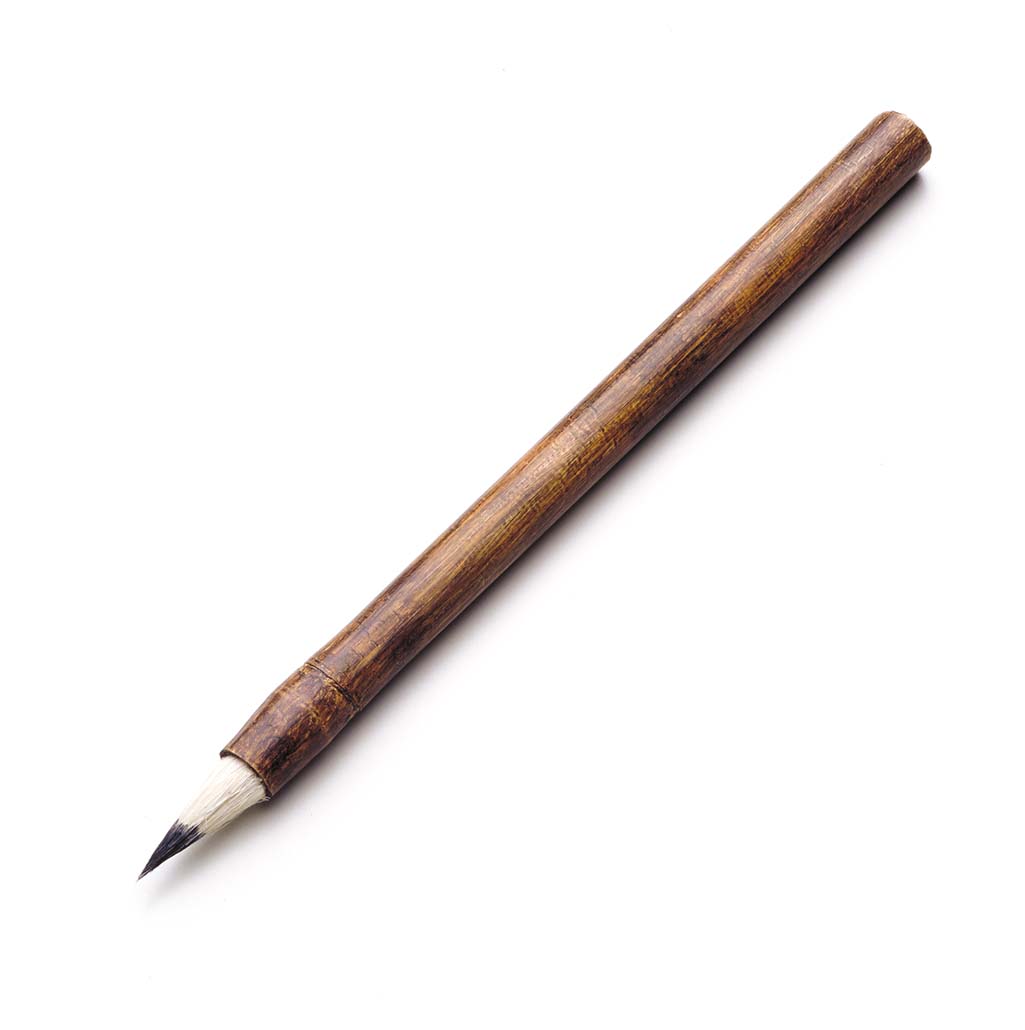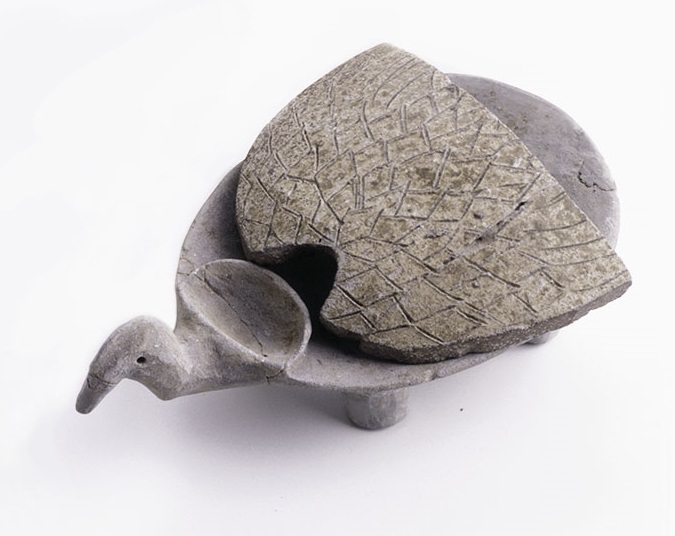The World of Officialdom
The World of Officialdom
The palace was also a center of bureaucracy: approximately 7,000 people worked at many offices throughout the compound.
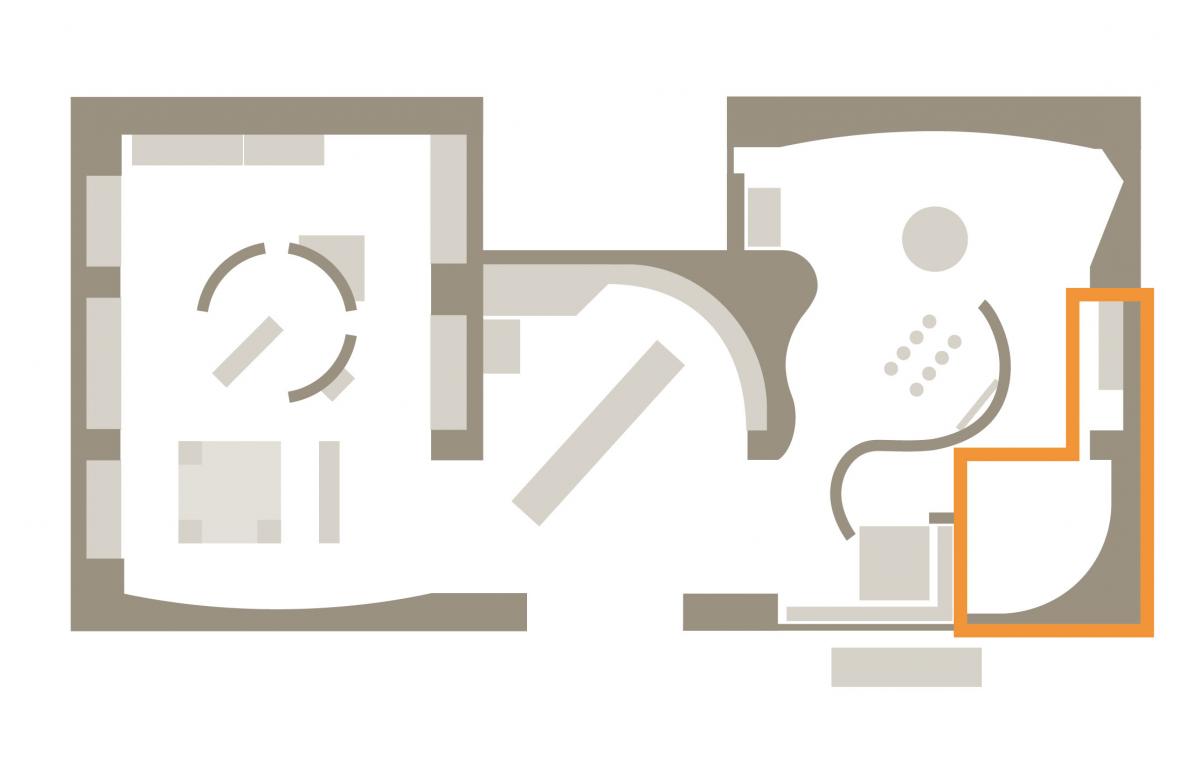
■ Officials of the Nara Period

The hierarchy for officials extended from rank one to eight and had at least achieved the shoi court rank. However, even those without rank worked as officials within the palace. Officials wore robes differing in color and material on the basis of their rank, and rank also determined their professional positions. Those ranked five and upwards are generally regarded as aristocracy.
○ The Challenges of Government Officials
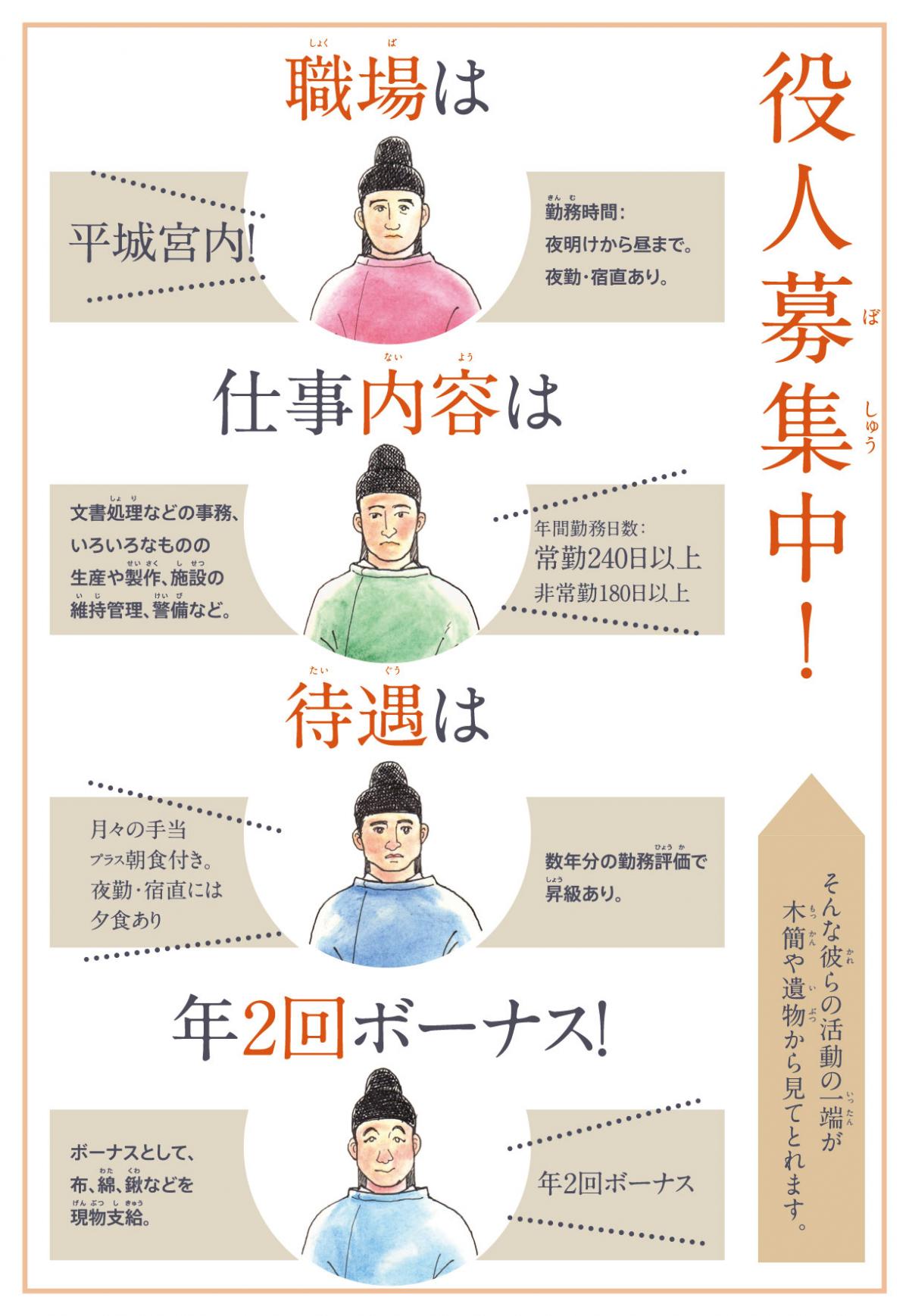
Let’s describe the working conditions of Nara Palace officials in the format of a modern day help-wanted ad.
- Workplace: The grounds of Nara Palace.
- Working hours: From dawn to noon. May include night shifts and overnight duties.
- Work details: Document processing and other office work, various types of production and fabrication, facilities maintenance, security, etc.
- Annual workdays: Full-time 240 days plus; part-time 180 days plus.
- Compensation: Breakfast included. Dinner served upon night shifts and overnight duties. Opportunity for promotion based upon evaluation of work performance over several years.
- Bonuses paid twice annually! Bonus benefits include cloth, cotton, plows and other payment in kind.
○ Where Did Officials Live?
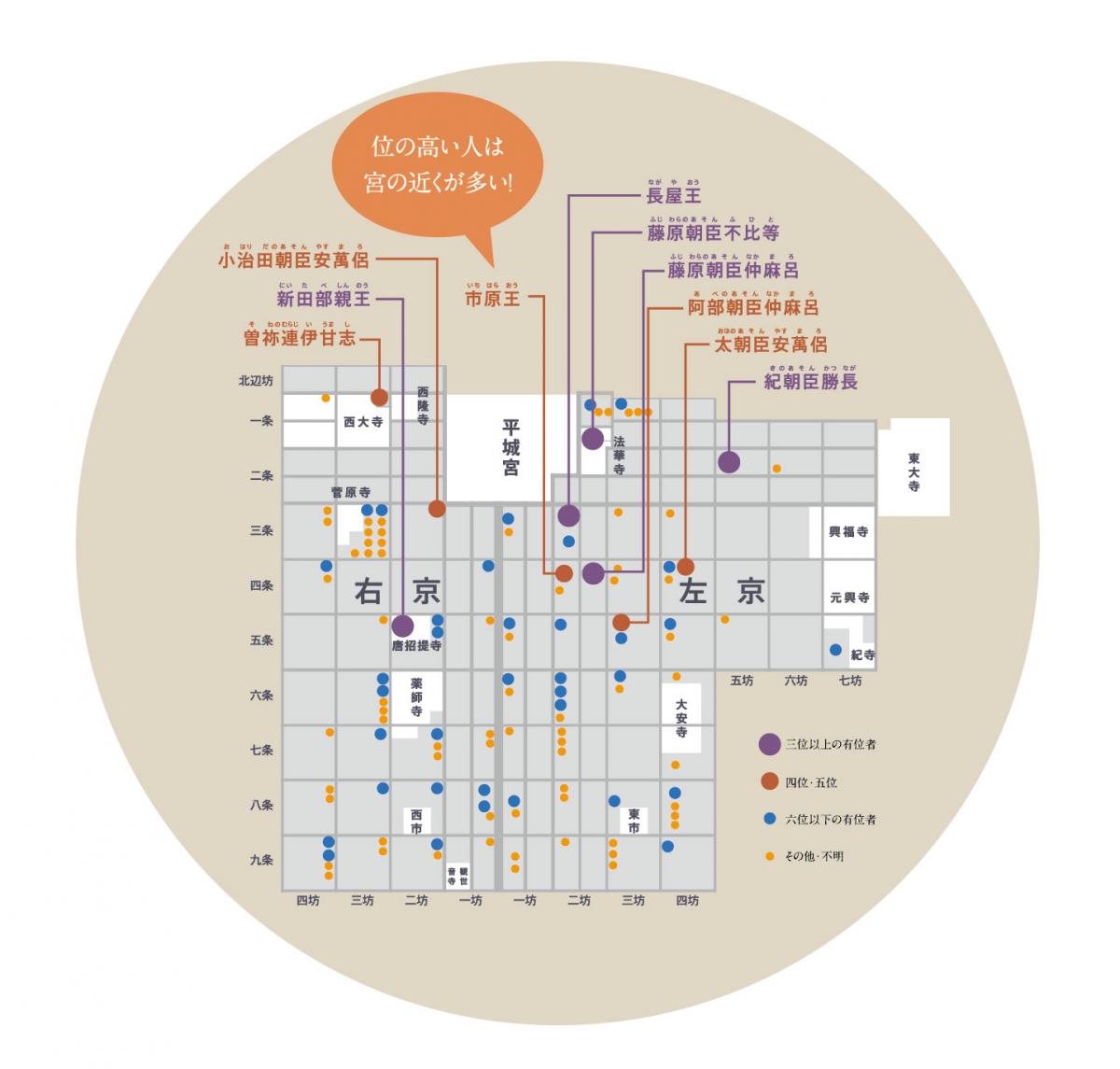
This map was compiled on the basis of various records. Those findings indicate that officials of Fifth Rank and above lived near the Palace, while the majority of those of Sixth Rank and below dwelled in neighborhoods south of the Rokujo quarter.
○ What Kind of Work Did They Do?
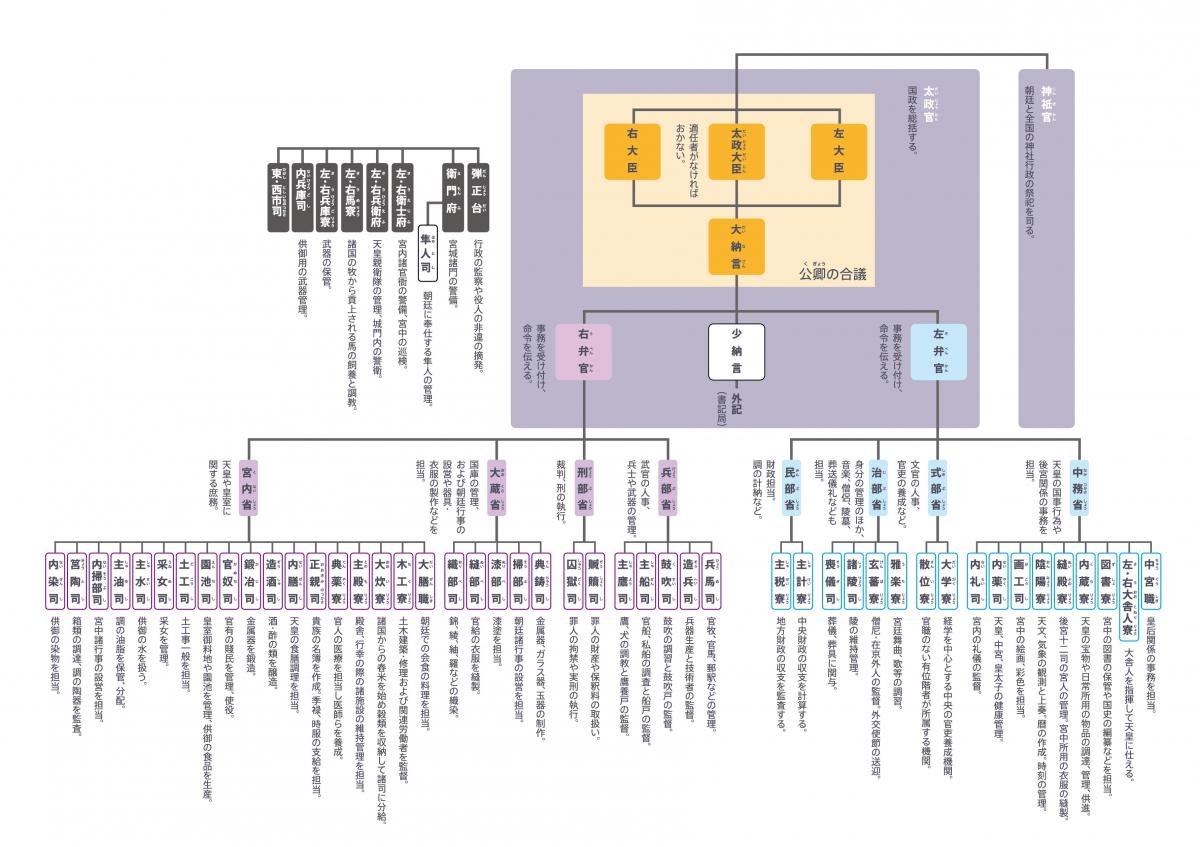
In modern-day terms, the government offices during the Nara Period were generally composed of nikan (two agencies) and hassho (eight ministries). Ranked beneath these key organization designations, meanwhile, were various other government offices as well.
■ The Various Jobs in the Palace
Excavation and research have also yielded information about the various types of work performed at Nara Palace. Mokkan tablets, bokusho earthenware and other sources, meanwhile, offer hints about the mutterings of government officials. Let’s take a look at that aspect of the Palace. The effigies have been constructed from assumptions gleaned from such evidence.
○ Cooking
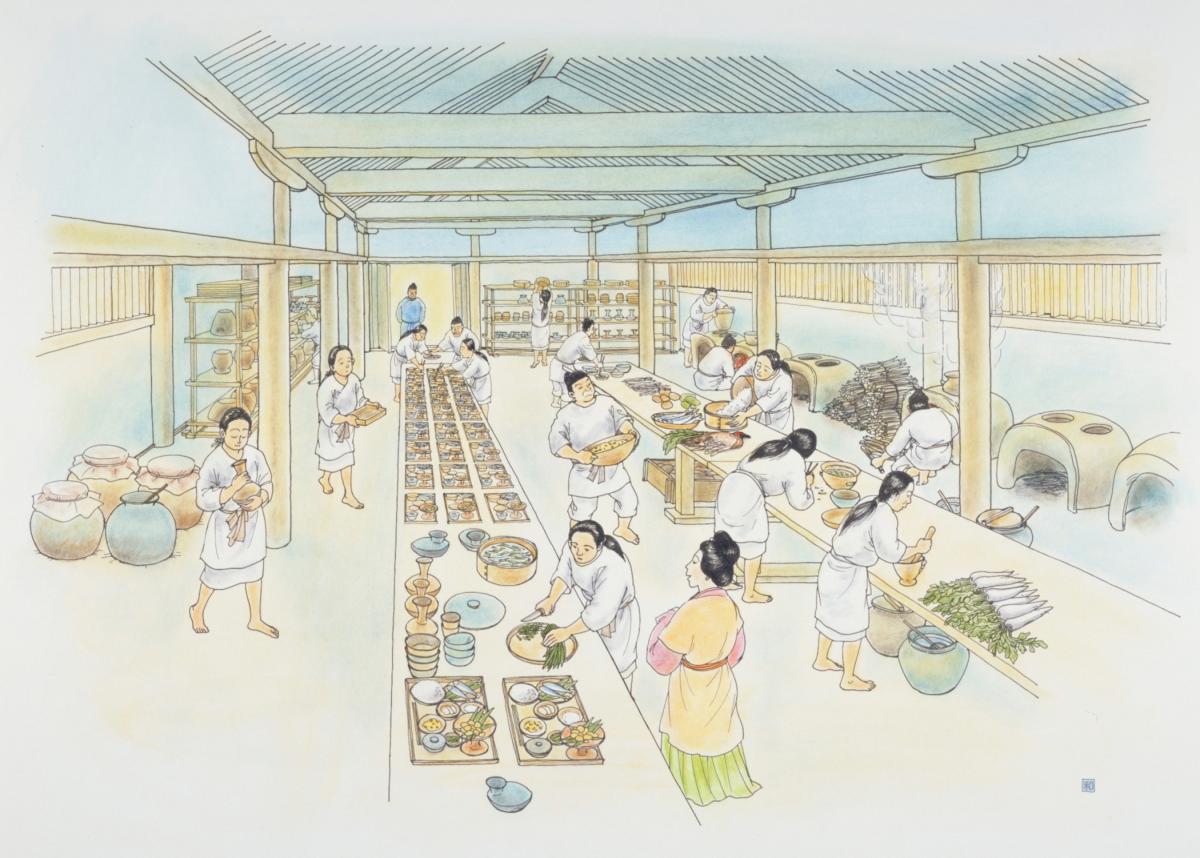
The Daizenshiki (Bureau of Imperial Cuisine) was in charge of all cooking for group dining occasions at the Court, votive offerings to temples and shrines, preparing meals for officials, and other purposes. The large well and portable cooking stove discovered north of the Saigu (West Palace), which was built on the remains of the Daiichiji Daigokuden (Former Imperial Audience Hall), are believed to be relics of former government offices.
[Grumbling]
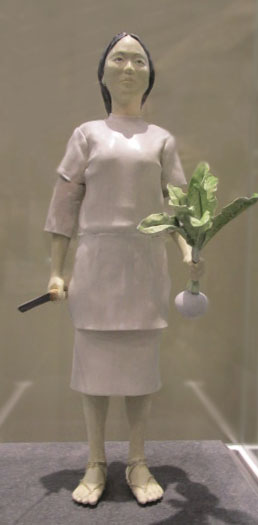
“After we go to all the work of preparing meals for several hundred diners, it’s certainly disappointing to be told that the food here is lousy.”
○ Rice Wine Production
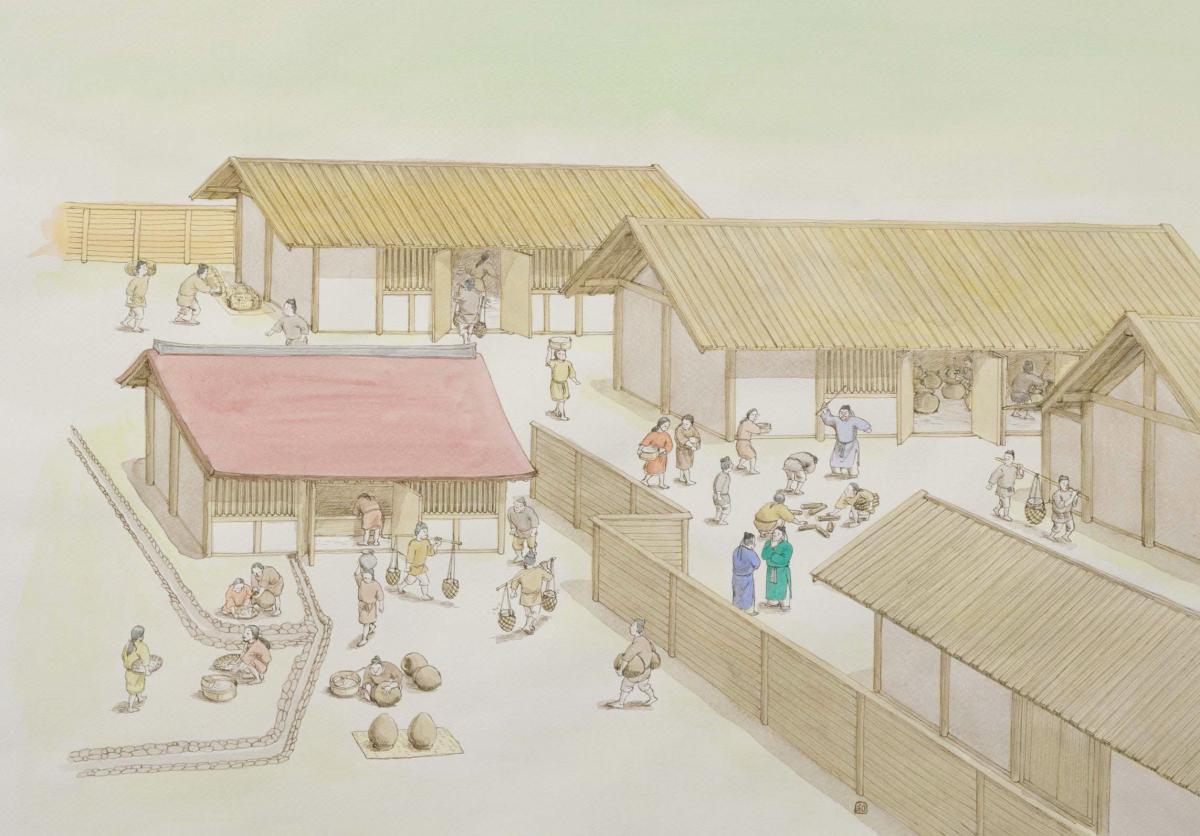
The Zoshushi (Rice Wines and Vinegars Department) was consigned with the role of brewing the rice wine, vinegar and other beverages consumed at the palace. Among the items uncovered at the ruins of an office discovered on the east side of the Dairi (Imperial Palace) are a building containing traces of earthenware pots installed there, three wells, a pit possibly used as a storage facility for seed malt and other remains.
[Grumbling]

“We make the rice wine, vinegar and other beverages used at the palace. Once when I took my eyes off the work area, a rat fell into a pot of some of our most important vinegar.”
○ Craftsmanship
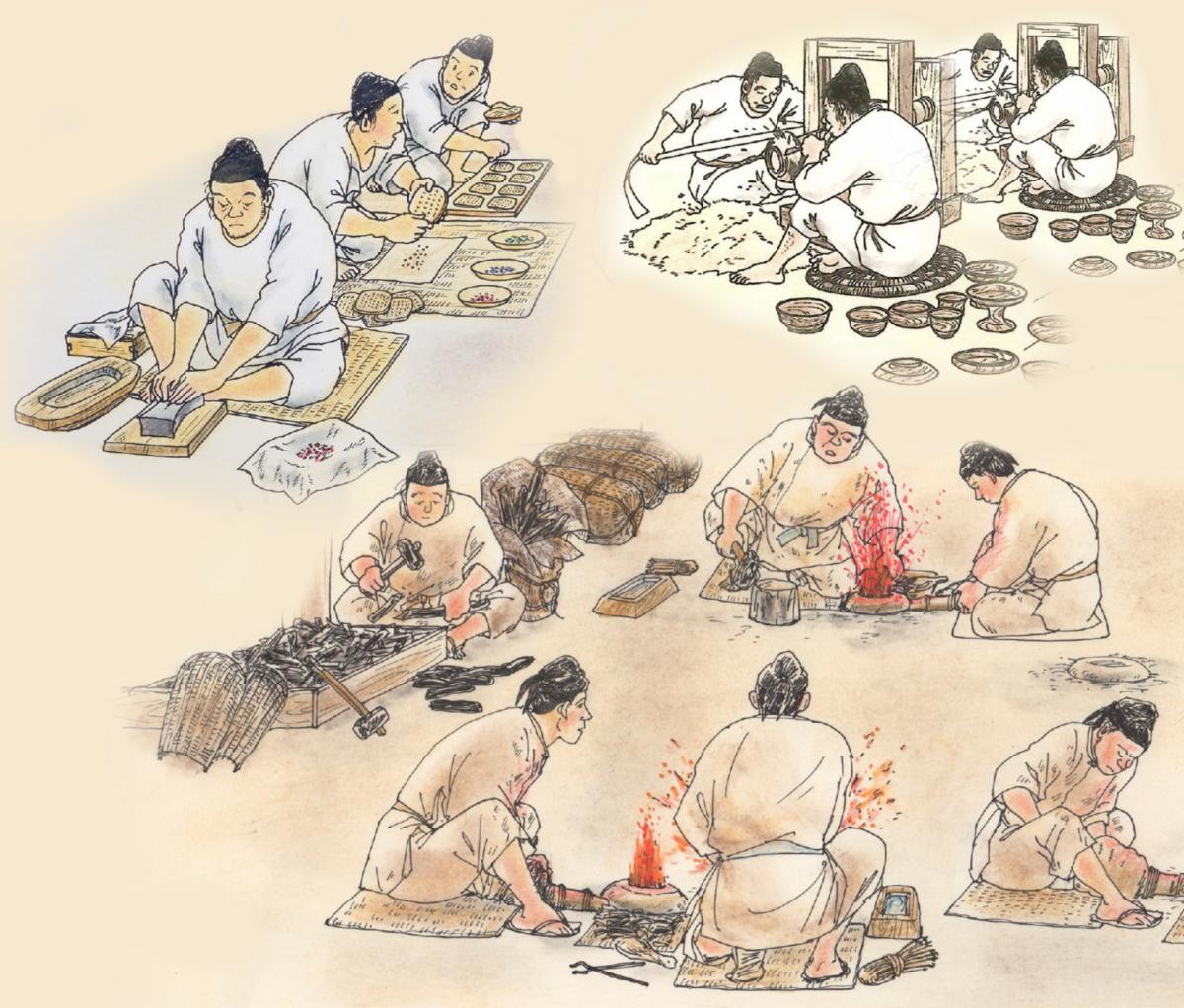
The Zoheishi (department in charge of weapons), Tenchushi (department in charge of casting), Tanyashi (department in charge of smiths), Dokoshi (department in charge of claywork), and other departments established workshops for craftsmanship around the palace grounds as necessary. Government official technicians, craftsmen and other personnel were deployed at such worksites.
[Grumbling]
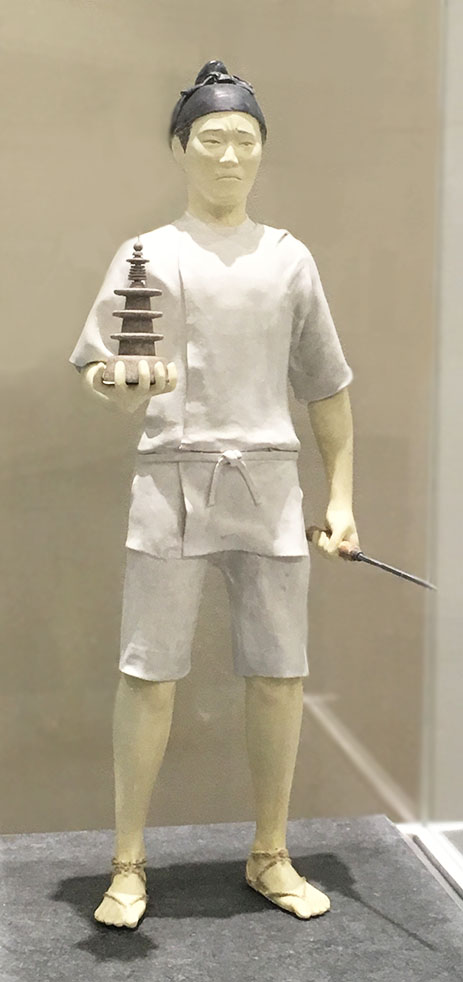
“Being directed to build the one million stupas was particularly demanding. We had about five and a half years to finish the work, and it was mind boggling to think of how many we needed to turn out each day to meet that schedule.”
○ Security Guards
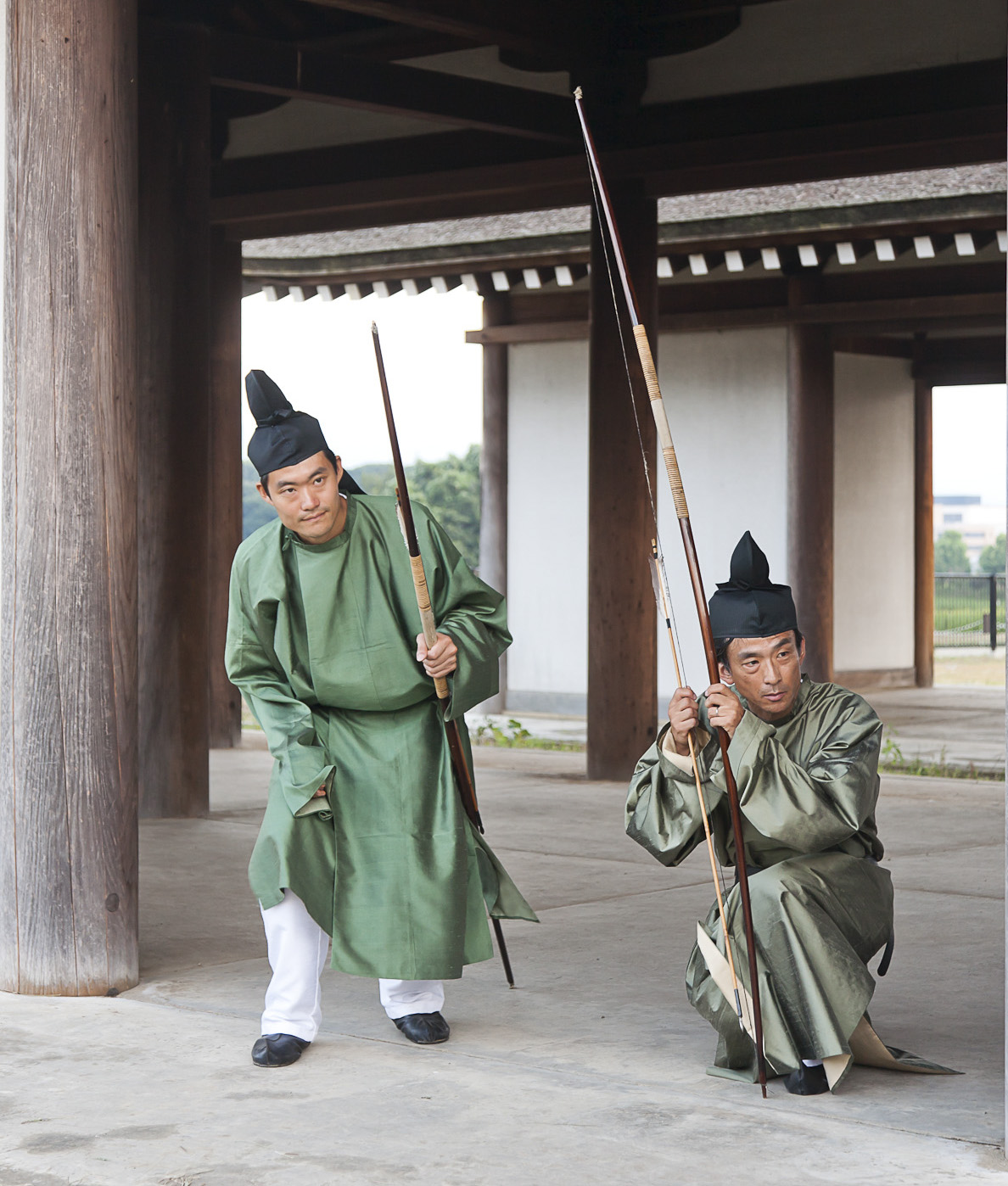
Security for the palace was covered by the Emonfu (Headquarters of the Outer Palace Guards), Sayu Ejifu (Left and Right Headquarters of Imperial Palace Guards), Goefu (Five Palace Guards) and others. The Outer Palace Guards were sentinels selected from dans previously involved in guarding the palace, as well as farmers nationwide, and were primarily assigned to keep watch over the Kyujomon (outer gate) and Kyumon (inner gate).
[Grumbling]
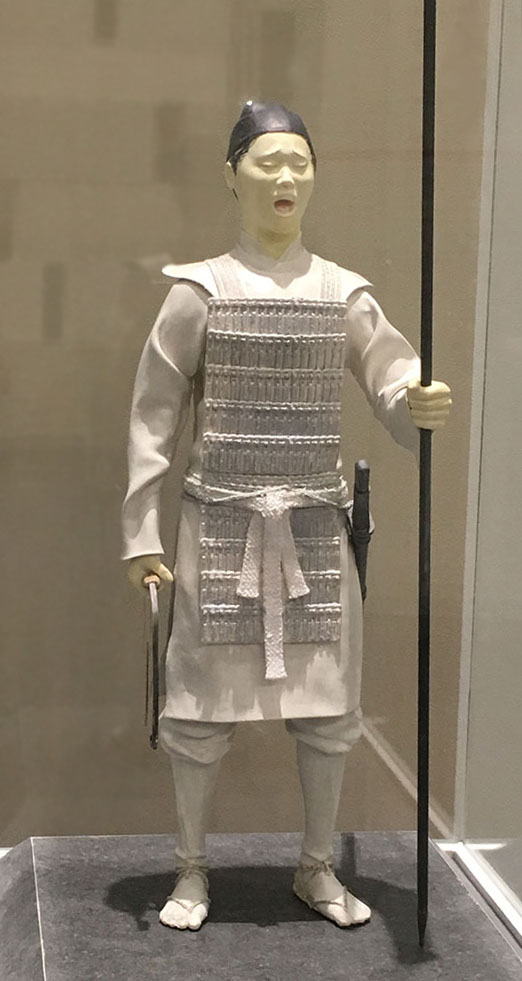
“Besides guarding the palace and capital grounds at night, we also have to beat drums just before dawn and then open the outer gate. I’m pretty sleepy around that time, and I need to cover my yawns.”
○ Horse Handling
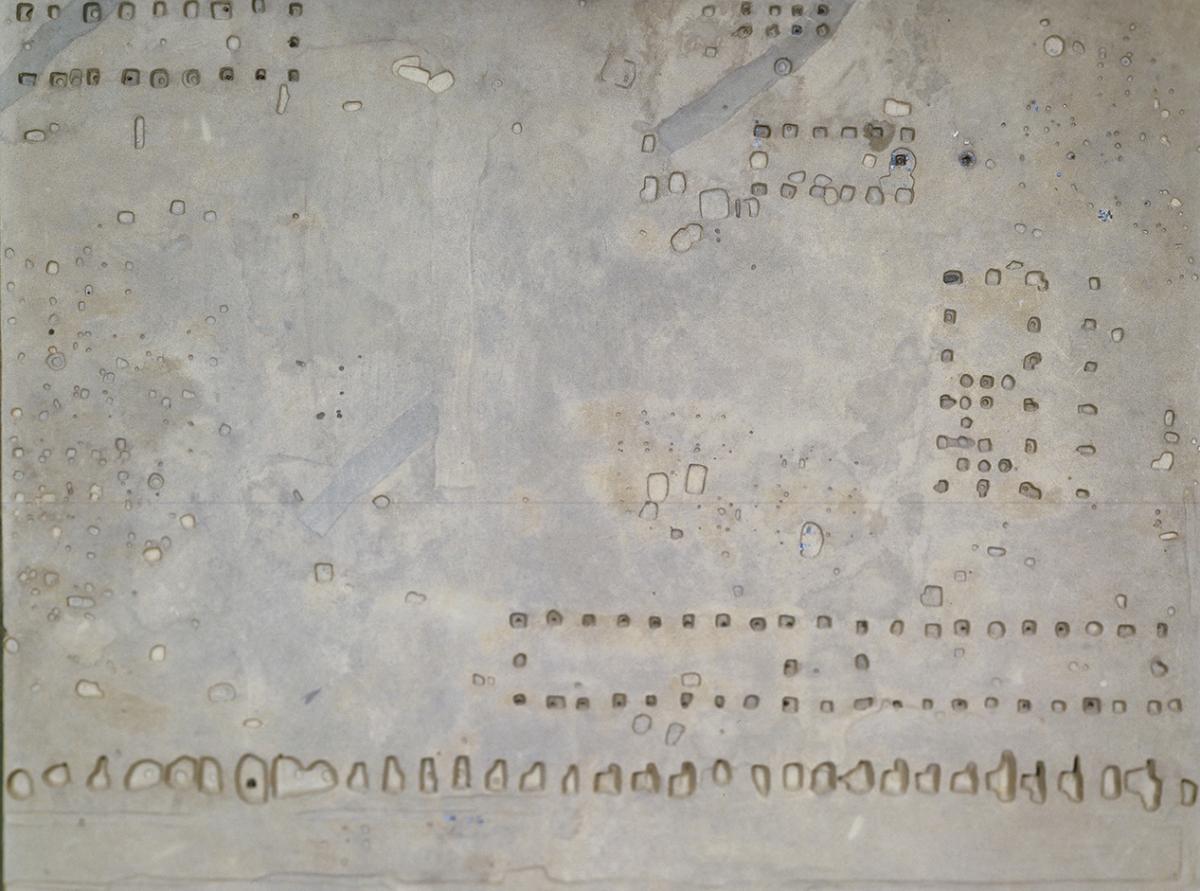
The Meryo (stables) were divided into two sections, the left and right. The personnel took charge of caring for and training horses sent from ranches around the nation, as well as assigning them to necessary chores and duties. Discovered here have been a long and narrow building and rectangular pit, along with an open space believed to have served as a stable and washroom to look after the steeds, and a riding ground to exercise and train them.
[Grumbling]
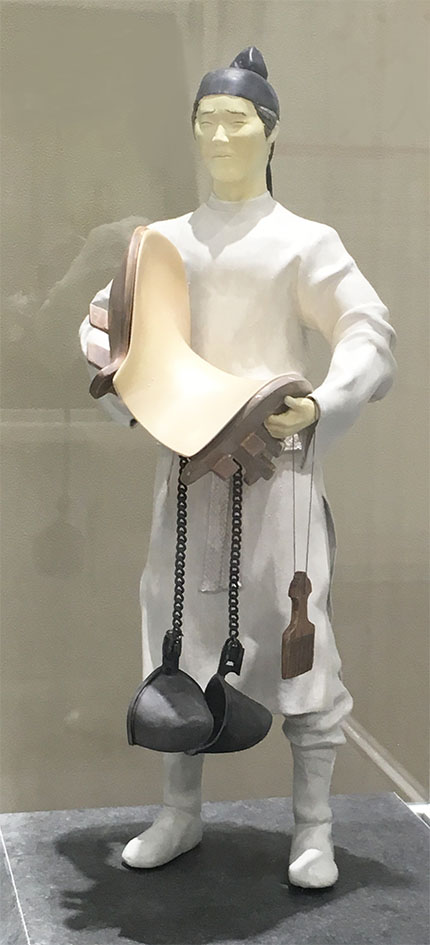
“While most of the horses tend to be quiet, there are others that can get viscious. They look for any chance to bolt off, kick at your head and otherwise act up. You can’t relax for a moment here.”
■ Work at the Office

The main job of the Nara Palace officials was to do administrative work through the means of written documents in accordance with the ritsuryo system. Just as much appreciated as paper, wooden tablets, or mokkan, were used widely for documentation. Because of this, the toolbox of a Nara Period official had to also include a knife for carving in wooden tablets, in addition to their brush, inkstone and ink.
[Grumbling]
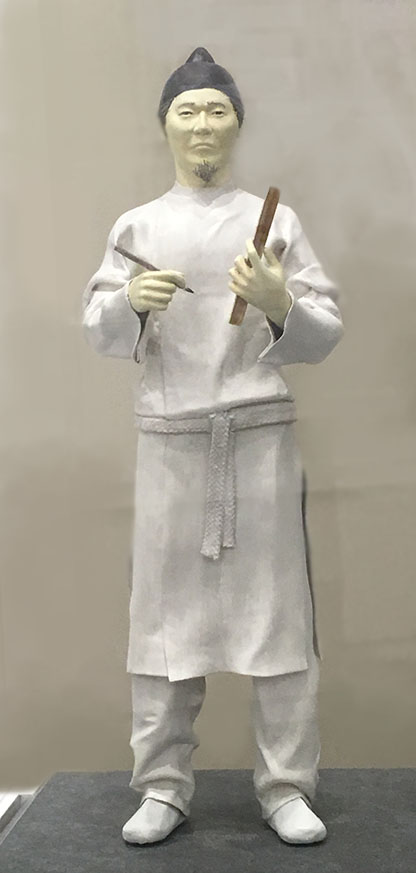
“Everything needs to be put into writing here – from transmission of orders to work absence notifications. I spend so much of my time practicing my calligraphy that sometimes I feel like writing down my complaints too.”
○ The Lives of Government Officials
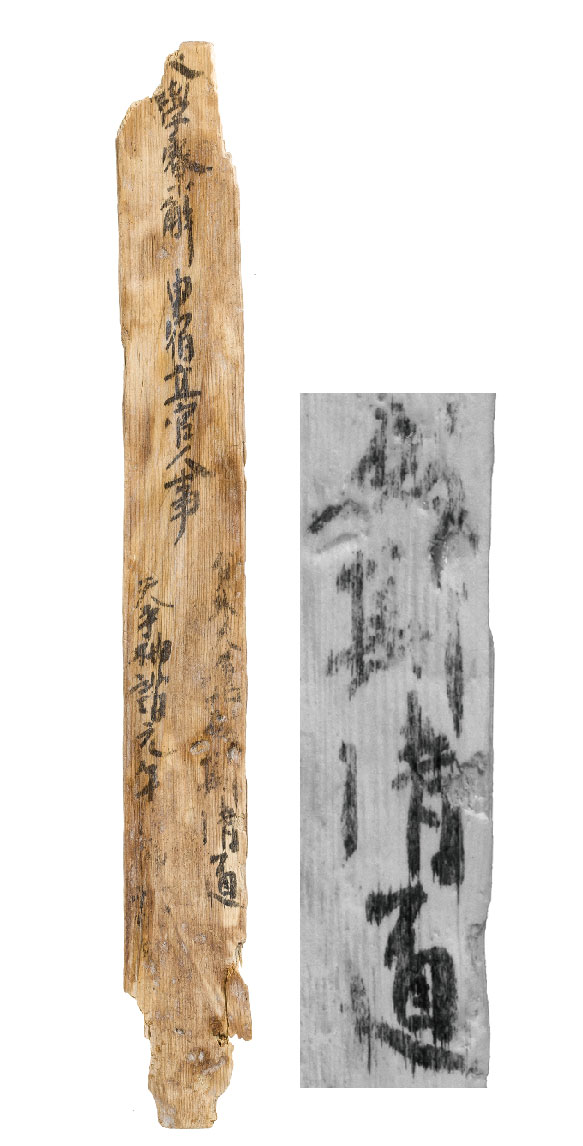
Recorded on certain mokkan (wooden tablets) are faithful depictions of the everyday lives of government officials. Besides daytime schedules, many slept over to work nightshifts, and all were expected to perfect their penmanship skills. Although the work demanded diligence and devotion, promotions were not so easy to achieve. Perhaps to relax from such tough duties, many of these officials appeared to demand alcohol rations whenever they could. Also found here are names of officials believed to have ancestral roots in Persia (current day Iran).
○ What Government Officials Used
Based on unearthed documents, items necessary to perform administrative duties apparently included brushes, black ink, inkstones, water jugs, small knives and other aids. Also on display here are waist belts and metal clip sashes. The so-called koshiobi waist belts joined the color of clothes in playing the important role of indicating official rank.

